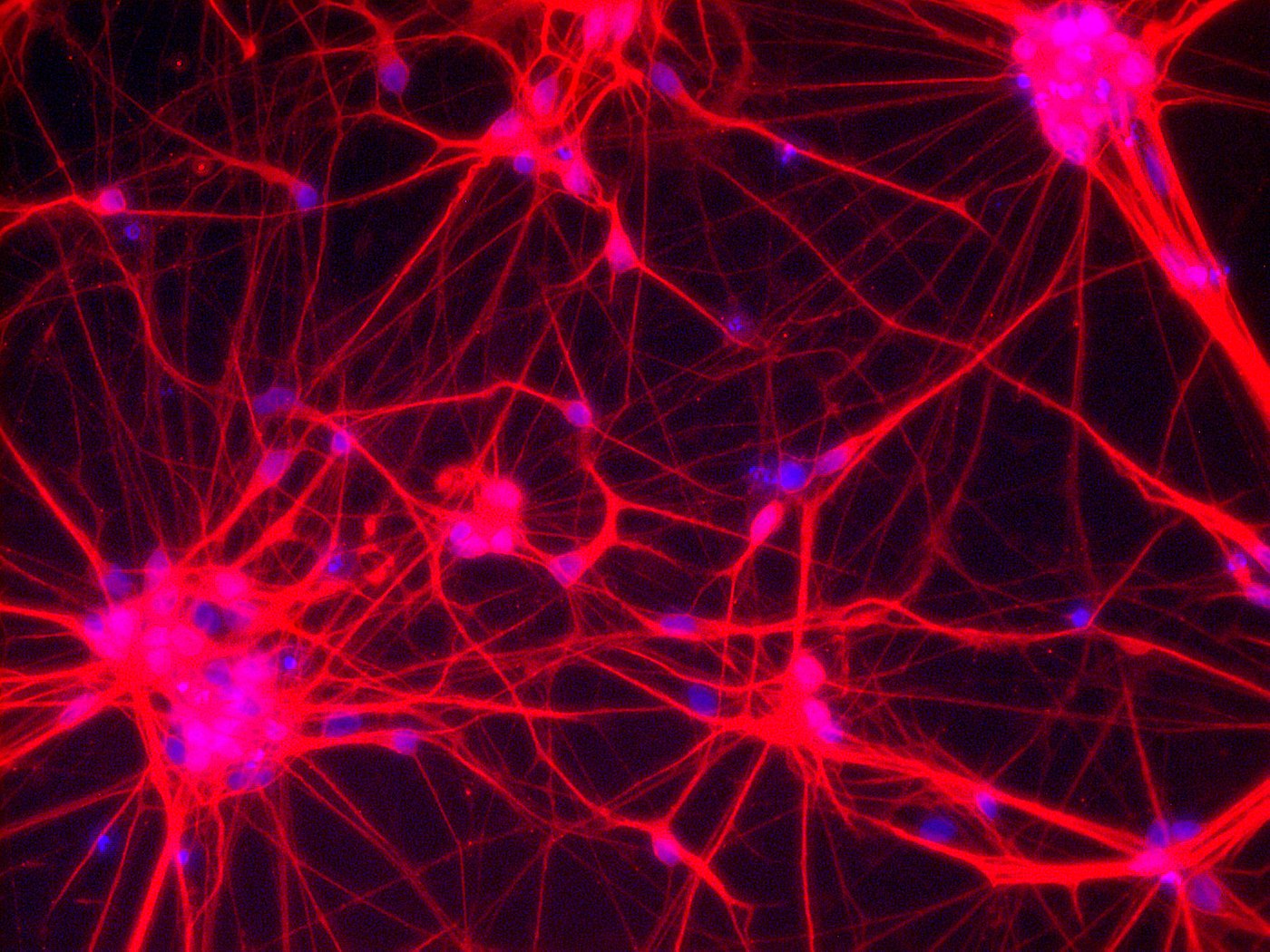
Neurons – Network of neuronal cells (Blue: nucleus; Red: neurons) [Copyright: Institute for Transfusion Medicine, UK Essen]
The number of new applicants in the reporting period (January 1, 2016 to December 31, 2017) suggests a steady interest in research with human embryonic stem cells (hES cells): Only seven of the applicants had previously received an authorization, all others received an authorization to import and use human embryonic stem cells for research purposes for the first time.
Since the Stem Cell Act (StZG) came into force in July 2002, a total of 146 approvals (as of May 2019) have already been granted by the competent authority, the Central Ethics Committee for Stem Cell Research (Zentrale Ethik-Kommission für Stammzellenforschung, ZES) at the Robert Koch Institute (RKI). In the current reporting period, 25 applications for authorization to import and/or use hES cells under StZG were submitted, none of which were rejected (one decision was pending at the end of the reporting period).
What are human embryonic stem cells used for?
The majority of applications in 2016/17 came from the field of basic research. However, some research projects also focus on the establishment of cell models in order to investigate human diseases more closely. Other approaches use hES cells to investigate questions concerning human induced pluripotent stem cells (hiPS cells) and hES cells in parallel. A previously feared predominant use of hES cells as the "gold standard" for research with hiPS cells, however, is not discernible either in Germany or internationally. In summary, it was noted that the use of hES cells is still necessary. A detailed description of the individual research projects can be found in the report.
How does the assessment work?
The Central Ethics Committee for Stem Cell Research (ZES) examines whether the cell lines to be used comply with the conditions for the import and use of embryonic stem cells pursuant to the Stem Cell Act. Among other things, the ZES assesses whether
What does an international comparison show?
Due to the cut-off date regulation, only cell lines generated before May 1, 2007 may currently be imported into Germany. Of particular interest for research and later clinical applications, however, are hES cell lines established under Good Manufacturing Practice (GMP) conditions in the absence of animal cells and using only synthetic cell culture media and materials. As these lines were only developed after the cut-off date, they may not be used in Germany. This leads to a significant restriction of scientists in an international comparison. It was also reported that the ZES had received a preliminary request for the use of a stem cell line established after the cut-off date. It remains to be seen whether these or other inquiries will lead to a change in the cut-off date regulation in the long term.
It is positively mentioned that German stem cell research deals with current topics, such as genome editing or the development of brain organoids from hES cells, and thus keeps up with international competition in certain areas. However, it is also noted that the current legal situation causes a decoupling of stem cell research in Germany with regard to clinical studies: While no such studies based on human embryonic stem cells are currently carried out in Germany, there are about 30 clinical studies in other countries (including the USA, China, Israel, Canada, Great Britain and France). The aim of these projects is to develop cell-based therapies for the treatment of currently incurable diseases. This includes research into age-related macular degeneration, diabetes mellitus, amyotrophic lateral sclerosis and Parkinson's disease.
You can find the full report here.